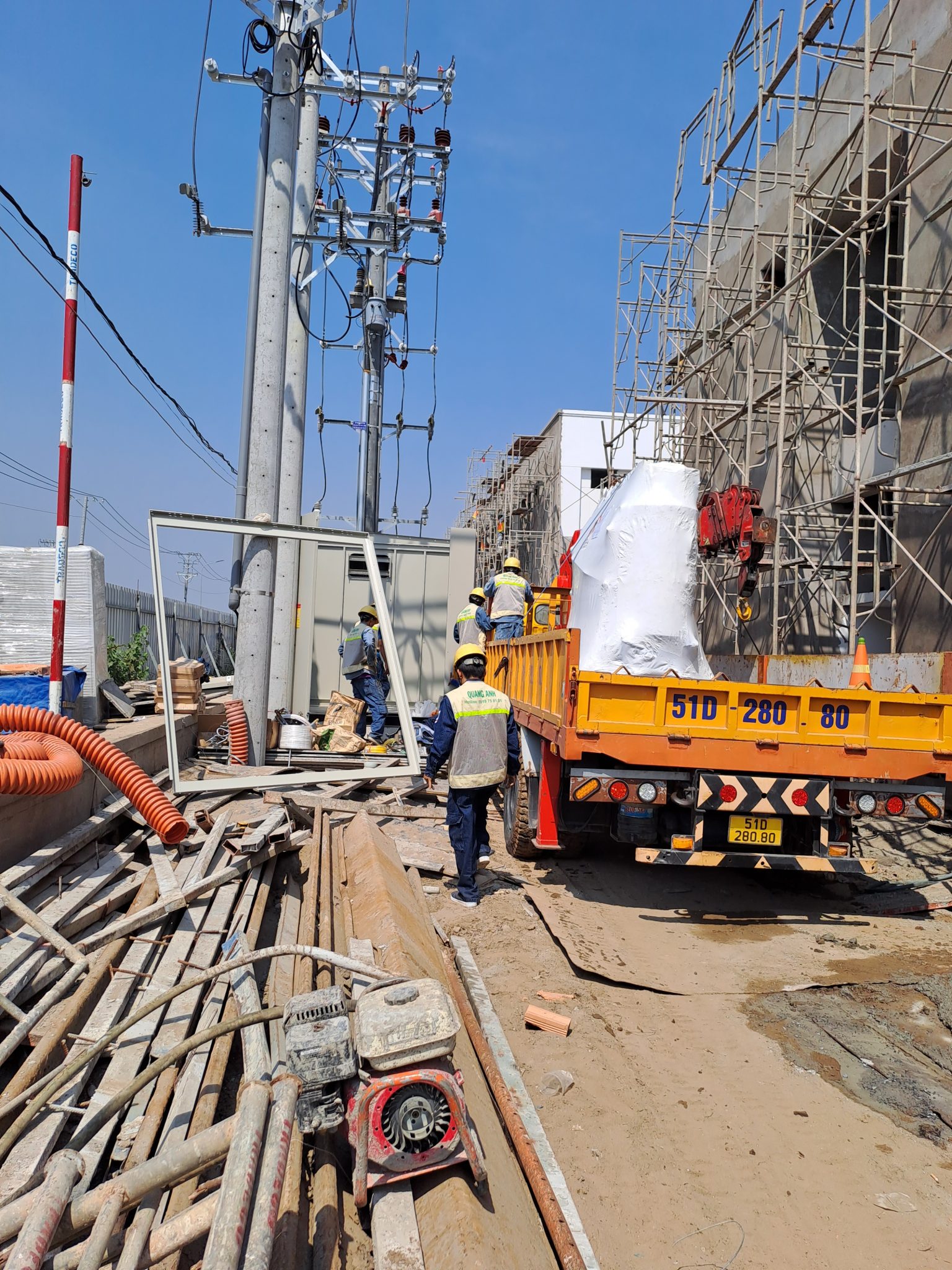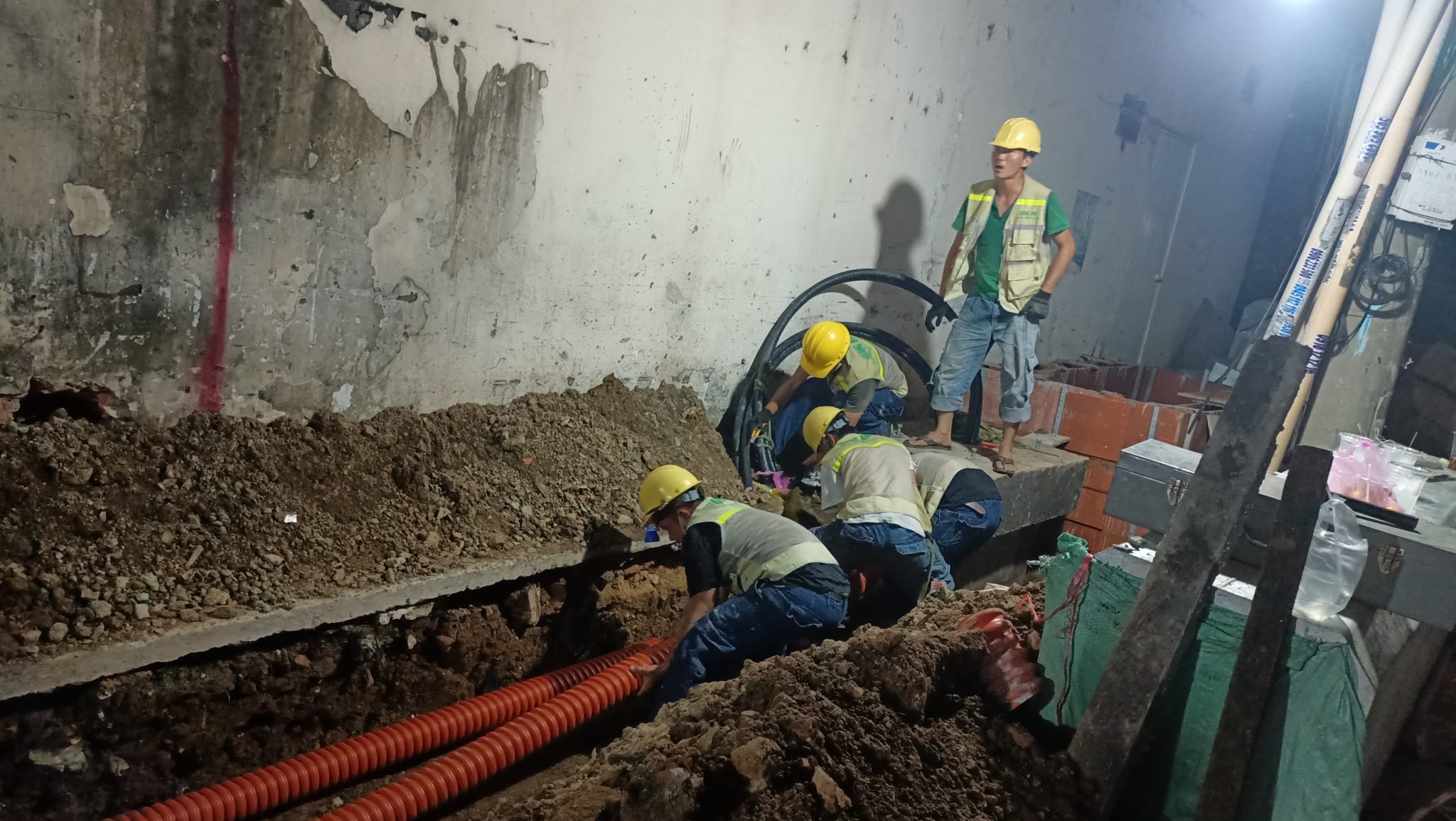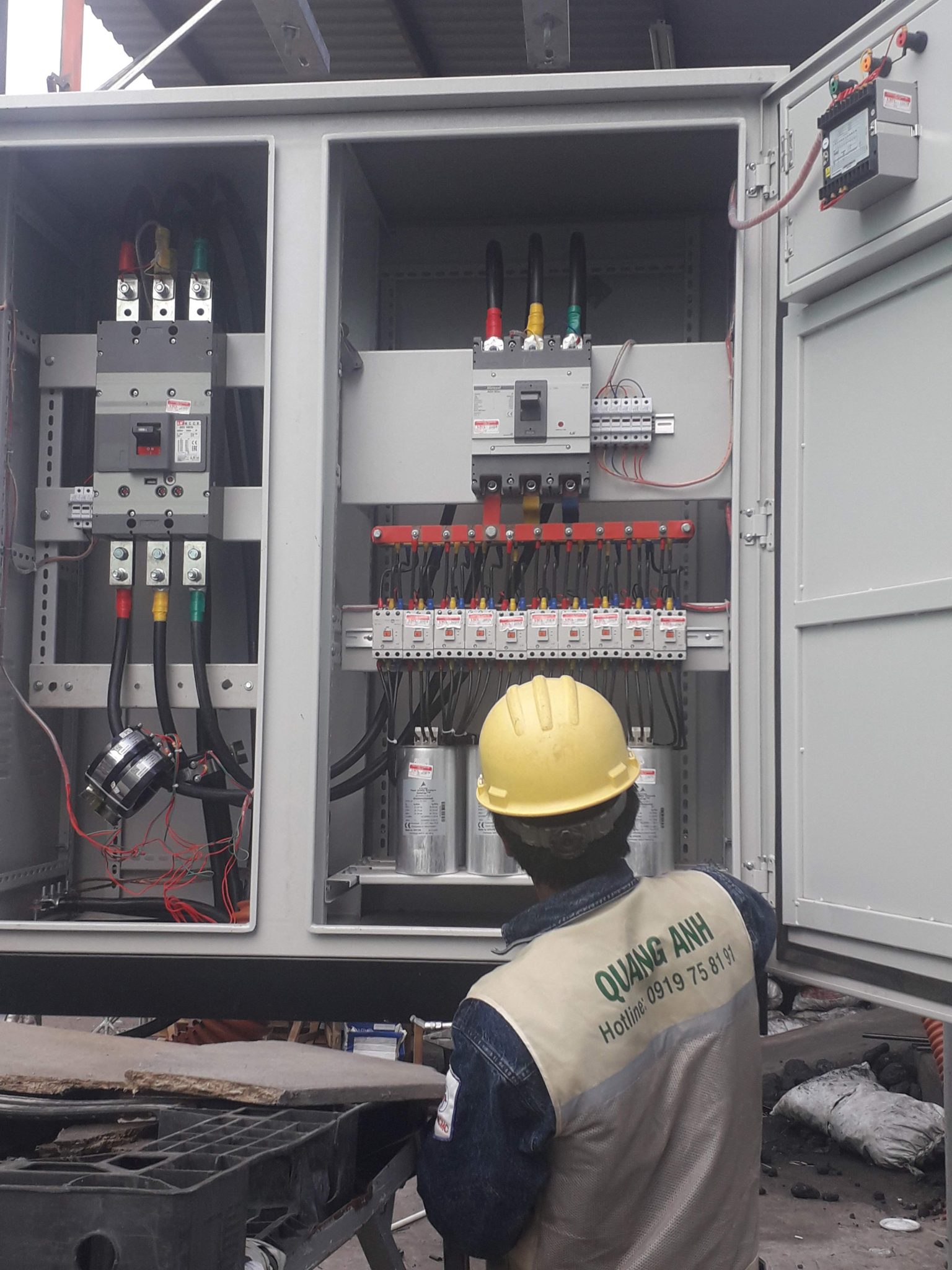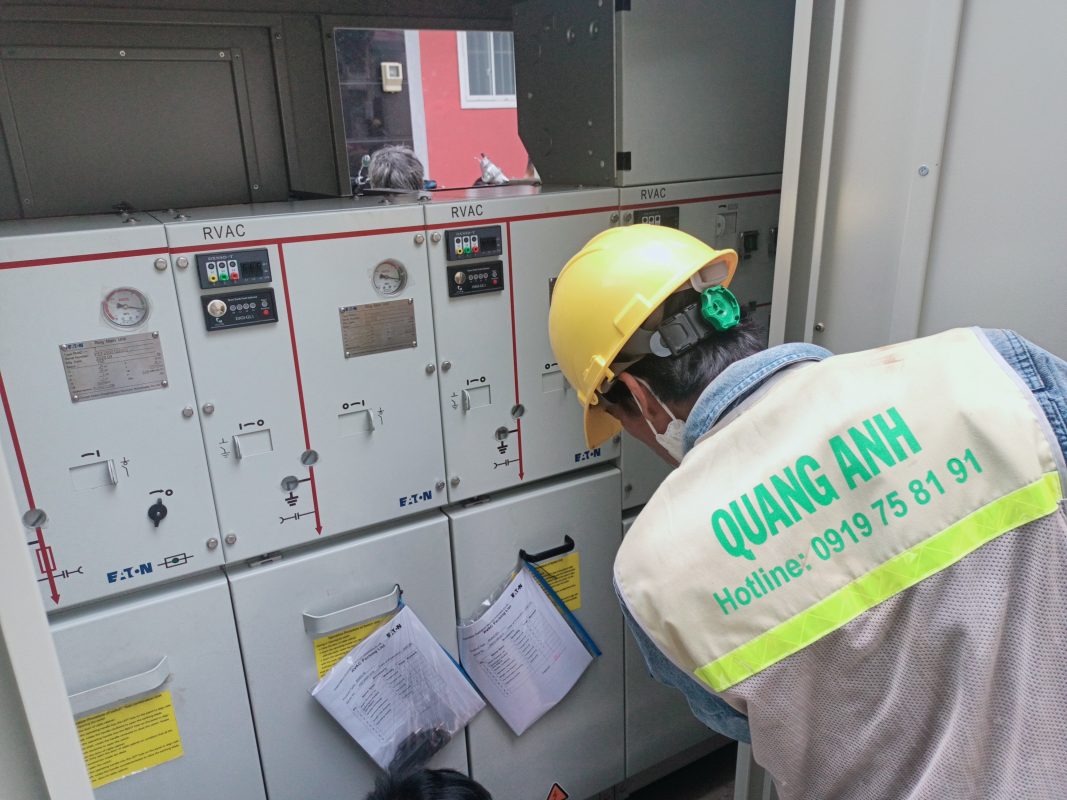Industrial electrical installation is a complex process requiring professionalism and adherence to stringent safety standards. This process includes equipment preparation, site survey, design drawing, device installation, connection, and testing.
Detailed Process of Industrial Electrical Installation
The installation process initiates with the thorough preparation of necessary equipment such as fuses, circuit breakers, transformers, and electrical wires. Following this, a site survey gathers information on installation location, electrical requirements, and specific technical demands. Detailed system design drawings are then created to ensure compliance with industrial electrical standards and meet usage needs. The last step involves installing the electrical devices onto designated locations, followed by system connections for stable operation.
Equipment Preparation and Information Collection
- Equipment preparation: Prior to installation, it is necessary to ensure all machinery, tools, and electrical materials like fuses, circuit breakers, and wires from reputable brands such as Cadivi, Schneider, and Mitsubishi are available.
- Information collection: Conducting a site survey is crucial to understand the technical requirements and project specifics, aiding in the effective system design.
Design Drawing of Industrial Electrical Systems
- Design drawing: Utilizing survey data to create detailed electrical system drawings that comply with technical symbols and industry language.
- Safety evaluation: Thoroughly check the drawings to ensure they meet safety standards and efficient system operation.
Construction Installation of Electrical Systems
- Execution by design: Install electrical equipment precisely according to approved designs to ensure accuracy and efficiency during operation.
- Safety assurance: Adhere to safety standards throughout the installation process to prevent untoward incidents.
Inspection and Testing
- Trial run: Conduct a complete system check to ensure it operates safely and reliably.
- Acceptance and handover: Upon fulfillment of requirements, proceed with handover and guide customers on operational procedures.
Warranty and Maintenance
- Warranty phase: Offer comprehensive warranty policies and support, ensuring repair services if issues arise.
- Industrial electrical maintenance: Provide periodic maintenance services to sustain system stability and prolong lifespan.
Following this process guarantees the industrial electrical system’s efficiency and utmost safety, catering to business needs.

Guide to Installing Industrial Electrical Cabinets
The installation of electrical cabinets begins with reading and cross-referencing drawings and material lists. Next, equipment installation according to the design is crucial, where main circuit breakers should be placed at the top left corner, and devices like fuses and phase protection units on the right. Other devices like branch circuits, control systems, relays, and contactors are sequentially arranged below. Labeling the devices within the cabinet facilitates future management and maintenance.
The assembly of industrial electrical cabinets demands meticulous attention to ensure stable and safe operations within industrial environments. This includes steps from preparing equipment to testing and running operations.
- Preparation of Equipment and Materials: All necessary equipment such as cable trays, power and control devices, indicator lights, buttons, switches, HMIs, and Volt, Amp meters must be thoroughly checked against the material list to confirm availability.
- Understanding Drawings and Material Lists: The ability to read detailed drawings and material lists is critical. Engineers must understand the placement and arrangement of cabinet components according to the electrical diagram.
- Cabinet Frame Installation: The installation location must be dry, avoiding moisture or impact. The cabinet frame is securely fixed to the wall or floor, and cable trays need precise installation.
- Mounting Components into Cabinets: Electrical conduits should be cut to size and installed as per drawings; power and control devices need appropriate anchoring. Especially, door-mounted devices should be installed post punch-hole setup.
- Electrical Device Connections: Breaking devices are installed following schematic principles. Electrical wiring must be done precisely to guarantee all components function correctly.
- Testing and Operation: A comprehensive system test is conducted before trial operation, ensuring all connections are secure and systems are functioning stably.

Standards and Technical Requirements in Industrial Electrical Installation
Adhering to safety standards is paramount in industrial electrical installations to protect users and equipment. Systems must meet comprehensive industrial electrical standards and be reliable and easy to maintain. This involves meticulous preparation and execution from design to post-installation inspections.
Industrial electrical installation requires adherence to national and international standards to ensure electrical safety and system effectiveness.
- National Standard TCVN 9208:2012: This standard governs the installation of cables and wires up to 24 kV, offering guidance on cable layout within tray structures, conduits, or underground.
- Cable Installation: Installation must be precise, adhering to TCVN 9207:2012, ensuring system stability.
International Standards
- IEC 60439-1: Sets requirements for cabinets to safeguard and enhance system features. Ensures cable installation and other cabinet components meet stringent safety and efficiency criteria.
- Circuit Breakers: Under IEC 60947-2, these devices must operate reliably in harsh industrial settings.
Technical Requirements in Design and Construction
- Power Calculation: Ensuring balanced power distribution to all required devices and machines for optimal system operation.
- Design Drawings: Drawings should be clear and detailed, applying correct electrical engineering symbols.
- Equipment Selection: Follow national standards such as TCVN 7447-5-51:2010 for appropriate electrical equipment selection.
- Electrical Equipment Installation Design: As guided by TCVN 394:2007 for maximum maintenance and operational efficiency.
- Industrial Electrical Safety: Prioritize by strictly adhering to regulations QCVN 01:2008/BCT.
Requirements for the Engineering Team
The engineering team must possess high expertise in industrial electrical project design and execution. Choosing a reputable partner ensures the sustainable success of the system.

Industrial electrical installations bring tremendous technical and strategic benefits, as all steps from design to construction, maintained at high standards, ensure safety and operational efficiency, thereby enhancing system productivity and lifespan.
Contact QuangAnhcons via hotline +84 9 1975 8191 for consultation and premium standard industrial electrical installation services.
QuangAnhcons provides professional industrial electrical installation services, ensuring quality and compliance with the highest safety standards, helping businesses optimize their electrical systems and enhance efficiency.


Related Posts
Factory Electrical Systems: Comprehensive Design and Implementation Guide
Discover the detailed and safe process of factory electrical systems design and implementation. [...]
Oct
Blueprints Required for Factory Construction Permits
Discover the necessary blueprints in factory construction permit applications, from floor plans to electrical and [...]
Oct
What Are the Requirements for a Factory Construction Permit? A Comprehensive Guide
Explore the documentation and steps needed to secure a factory construction permit for streamlined project [...]
Oct
Factory Construction Permit Procedures in Vietnam: Essential Guidelines and Documents
Learn the procedures for securing a factory construction permit in Vietnam, focusing on document preparation [...]
Oct
Key Steps in the Factory Construction Process
Discover the essential steps and requirements for building factories. [...]
Oct
Comprehensive Electrical Substation Solutions by Quanganhcons
Discover the cutting-edge electrical substation solutions offered by Quanganhcons for industrial applications. [...]
Oct
Investment Costs for a 1MWp Solar Power System and Influencing Factors
Explore the investment costs for a 1MWp solar power system in Vietnam and the influencing [...]
Sep
QuangAnhcons: Elevating Wind Energy Solutions
Explore QuangAnhcons' leadership in wind energy and renewable solutions in Vietnam. [...]
Sep
Electrical Contractor Strategies at Becamex Industrial Park
Discover the strategic advancements and partnerships of the electrical contractor at Becamex Industrial Park. [...]
Sep
Investment Insights for 1MW Wind Energy in Vietnam: Costs and Opportunities
Discover the detailed analysis of costs and opportunities for investing in 1MW wind energy projects [...]
Sep
Advanced Electrical Installation Solutions by QuangAnhcons
Explore advanced electrical installation solutions and modern technology with QuangAnhcons. [...]
Sep
Enhancing Industrial Electrical Services with Quanganhcons
Discover Quanganhcons' expertise in industrial electrical services, offering efficient and sustainable power systems. [...]
Sep
Comprehensive MEP Solutions by QuangAnhcons: From Design to Maintenance Excellence
Discover optimal MEP solutions with QuangAnhcons, dedicated to excellence from design through maintenance. [...]
Sep
Comprehensive Electromechanical Contracting Solutions by QuangAnhcons
Explore QuangAnhcons' comprehensive services for efficient and safe energy system solutions. [...]
Sep
QuangAnhcons: Empowering Industrial Energy Solutions
Discover how QuangAnhcons delivers optimal industrial EPC solutions. [...]
Sep
Effective Industrial Construction Management and Execution
Optimize your industrial projects from design to execution with our contractor services. [...]
Sep
QuangAnhcons: Pioneers in M&E and Renewable Energy Solutions
Discover QuangAnhcons' innovative M&E services and renewable energy solutions. [...]
Sep
QuangAnhcons: Expertise and Outstanding Services in the Electrical Sector
Discover the unmatched expertise and services of QuangAnhcons, setting superior standards in the electrical contracting [...]
Sep
QuangAnhcons: Innovation and Precision in Industrial Electrical Contracting
Discover QuangAnhcons, a top contractor offering superior electro-mechanical solutions. [...]
Aug
Expert Solutions for 2x2500kVA Substation Projects with QuangAnhCons
Explore QuangAnhCons, a forefront entity in designing and constructing large industrial substations. [...]
Aug